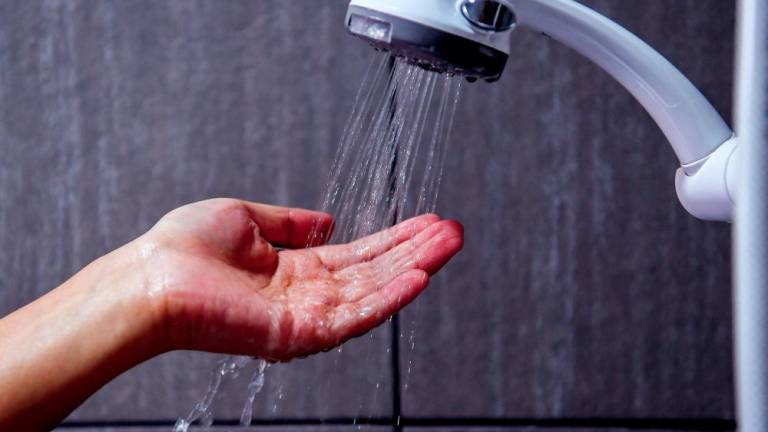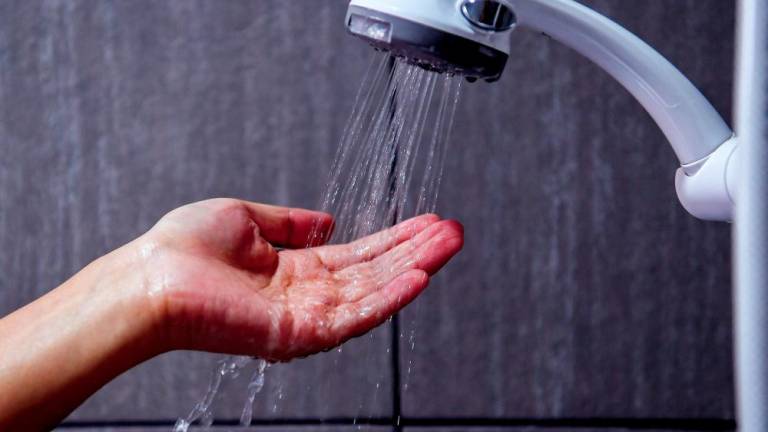APART from non-pharmaceutical interventions (lockdowns or other restrictions) and vaccination, prophylaxis (treatment given or action taken to prevent disease or its severity) is another pathway to flatten the curve that to date has been given less attention than it deserves.
Vitamin D (VitD), as one of the central elements of our immune system, which is inexpensive and relatively safe, with a side-effect of profile molecule toxic only in extremely high doses, has captivated scientists’ interest as one potential prophylactic since the onset of the Covid-19 pandemic.
The science behind VitD’s crucial immuno-modulating role is long-established. VitD helps our innate immune cells to produce beta-defensins and cathelicidins. These peptide nano-soldiers keep the first line of defence immediately as a virus enters the body and until the adaptive immune response is activated (which happens in about seven to 10 days for the first infection or within one to two days in case of reinfection).
In other words, even before our B-cells start producing antibodies, beta-defensins and cathelicidins, which can be produced in the right quantity only in VitD sufficiency, can significantly inhibit viral entry into the cells and its replication.
Furthermore, a sufficient level of active VitD inhibits the production of proinflammatory cytokines (IL-2, IL-12, INF-Gamma, IL-6, IL-8, IL-17), while upregulating anti-inflammatory cytokines (IL-4, IL-5, IL-10).
In other words, VitD down-regulates our immune system response towards the humoral pathway (antibody production), which is less inflammatory and, therefore, reduces the possibility of the cytokine storm.
VitD has other functions essential in fighting SARS-CoV-2 such as reinforcing physical barrier function in epithelial, intestinal, lung and corneal cells, inducing autophagy of the infected cells, which leads to reduced replication of virus – mechanism found to be suppressed by SARS-CoV-2 (VitD here works similar to Ivermectin, less its side-effects), increasing surfactants that prevent alveolar collapse and many more.
Malaysia’s health authorities have been looking into the VitD and SARS-CoV-2 association at the pandemic onset. However, no action was taken due to insufficient evidence at that time.
Nevertheless, to date, empirical evidence on the close association between SARS-CoV-2 and VitD multiplied manyfold.
To get a quick but robust overview of the empirical evidence, it is helpful to look at the most recent systematic meta-analytical studies, which are statistical studies on the large number of empirical studies pooled together.
The systematic reviews of numerous studies convincingly suggest that VitD deficiency, defined as 25-OH D < 20 ng/mL, is significantly associated with the risk of Covid-19 infection, the severity of its outcomes and mortality.
Although, like some authors rightfully pointed out, association does not imply causation, several clinical trials on VitD supplementation as a therapeutic intervention in SARS-CoV-2 management shed some light on the causal direction.
Two most recent meta-analytic studies looked into the existing observational, cross-sectional and even randomised clinical trials for VitD supplementation to SARS-CoV-2 patients and reported the following: The odds of intensive care unit (ICU) admission, need for mechanical ventilation, and mortality were significantly lower in the VitD intervention group than in the placebo group.
In all meta-analysed studies, there was inclusion of hypertension, diabetes and corticosteroid-use patients. No side-effects or adverse events related to VitD intervention was reported.
The above meta-analytic studies did not include another more recent published clinical trial due to the timing of the publication. This randomised clinical trial (although single centre) found that therapeutic improvement in serum VitD levels to 80-100 ng/ml has significantly reduced the inflammatory markers associated with Covid-19, with no side-effects. Among the participants, hypertension and diabetes patients were present as well.
The discussion of modes and doses used in any of the above-mentioned clinical trials has been intentionally left out of this article. They are the purview of healthcare specialists, and should not
be motivation for self-treatment by the public.
Overall, the convincing empirical results congruent with the well-established theory on VitD are there, but let us take correct conclusions and corrective measures.
Firstly, VitD sufficiency is not a silver bullet against SARS-CoV-2 severity, unlike vaccines. However, VitD deficiency should be recognised at least as a valid and important risk factor for SARS-CoV-2 infection and its severity.
Secondly, given the accumulated empirical evidence, VitD supplementation intervention in deficiency cases now sounds like a compelling additional strategy to flatten the curve.
It is important to note that many studies indicated importance of early VitD intervention, at least immediately upon admission to hospital, as starting supplementation upon ICU admission could be too late. Therefore, healthcare authorities could consider making serum VitD deficiency screening as a standard operating procedure upon positive polymerase chain reaction test.
Early VitD supplementation (in the form of oral vitamin D3 or calcifediol) can be considered for cases with VitD deficiency (25-OH D < 20 ng/mL) and even its insufficiency (25-OH D < 30 ng/mL) – generally accepted thresholds in the medical literature. This proactive strategy may result in lower hospital admissions and subsequent progression of severity, while relieving our overwhelmed healthcare system.
Thirdly, this is not in any measure a call for self-treatment! VitD can be toxic in extremely large doses or even in only relatively large doses taken for a prolonged period.
Furthermore, unsupervised VitD intake can be risky for people with cardiovascular issues, hypertension and some other underlying health conditions because VitD’s primary function in our body is to maintain calcium and phosphate levels. Therefore, unsupervised VitD intake may lead to calcification and other complications.
VitD supplementation would also require intake of other essential minerals such as calcium, magnesium, vitamin K2 and others. Therefore, qualified medical assessment, advice and supervision on the mode of intake, correct dosage and duration is the absolute requirement.
Last but not least is the long-term takeaway. The airborne nature of SARS-CoV-2 has taught us that ignoring the state and standards of our ventilation and filtration systems nationwide is a ticking bomb. This virus is now drawing our attention to the long-standing problem of VitD deficiency prevalence on the national scale, which to date seems to be not given the proper attention and intervention.
The fact that pandemic management has pushed more families to the poverty line should ring an even louder alarm as VitD deficiency is well known to be prevalent in low-income individuals.
SARS-CoV-2 made our lives miserable in many ways. However, would we be able to appreciate the valuable lessons it taught us? Remember that in crisis management theory, 99% of the talks is about the value of being proactive!
Rais Hussin and Margarita Peredaryenko are part of the research team at EMIR Research, an independent think tank focused on strategic policy recommendations
based on rigorous research.
Comments: letters@thesundaily.com













